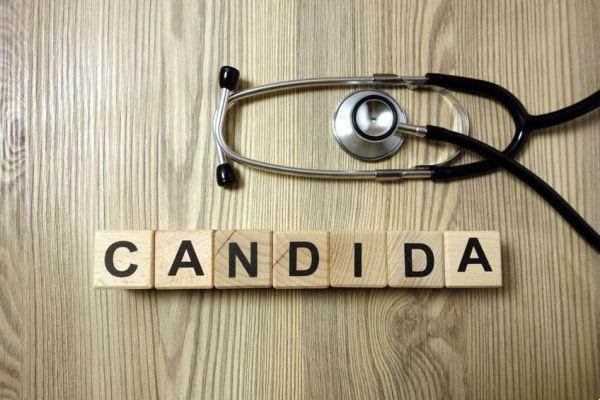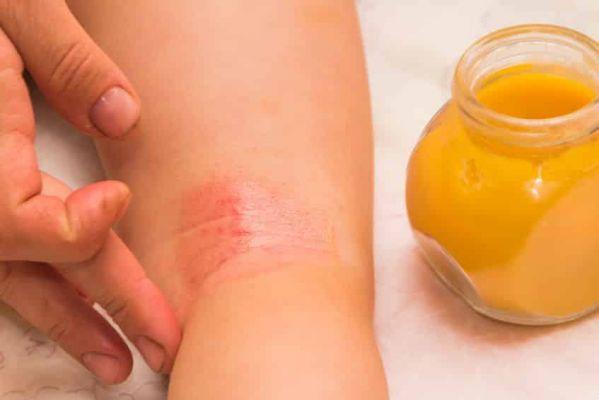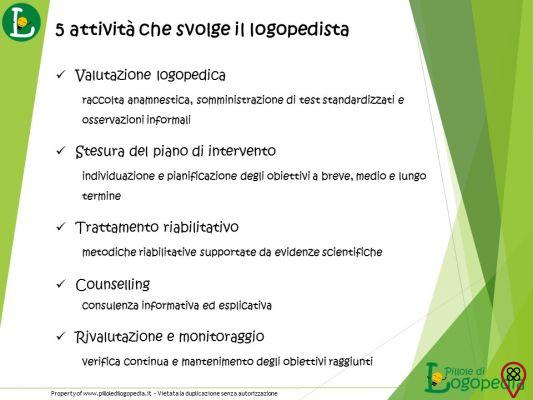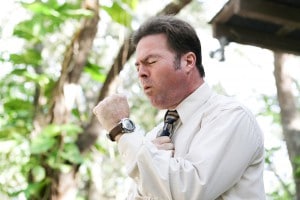Species of the Candida fungus generally live as benign parasites and rarely produce disease in healthy people. They normally reside in the gastrointestinal tract, vagina, skin, and mouth. However, Candida albicans is the most frequent cause of fungal infections in humans.
Most types of Candida infections originate when the normal parasitic flora breaks through the skin and mucosal barriers, becoming confined to these environments or spreading widely. In people with poor immunity, Candida organisms cause infections, which manifest in different ways.
The most common candidiasis is caused by the albicans species, however there are other types. In people with intravenous catheters or undergoing peritoneal dialysis, Candida organisms can enter the bloodstream.
Identifying the symptoms of candidiasis is essential to seek medical help and reduce the risks of infection severity. Learn more about this subject and if you detect any symptoms, look for a doctor!
what is candidiasis

Candidiasis is an infection caused by Candida fungi and is associated with decreased immunity, the use of immunosuppressants and corticosteroids, antibiotics, contraceptives, pregnancy, allergies, HPV (papillomavirus), HIV (human immunodeficiency virus) and to diabetes. It can affect female genitals, male genitals, skin, nails, mouth, throat and bloodstream in the most severe cases.
For approximately 90% of the cases, candidiasis is caused by the Candida albicans fungus, however it can occur due to other non-albicans species, which are glabrata, tropicalis, krusei, parapsilosis and Saccharomyces cerevisiae, being more uncommon.
More than 70% of women can be affected by candidiasis in the vagina and vulva, with almost half having a second episode of the infection and approximately 5% having a recurrence more than once a year.
The Candida fungus is present in about 20% of the female population, it is part of the vaginal flora and coexists well with other microorganisms.
In men, candidiasis does not occur so often, but it can also arise, mainly due to the risk factors discussed above.
In children, candidiasis can cause discomfort, pain and refusal to eat, appearing in the mouth (thrush) and external genitals, or both simultaneously.
types of candidiasis

candidiasis vaginal – occurs in women with a weakened immune system or an unbalanced vaginal flora, when the fungus that already exists in the body is able to reproduce excessively, without being stopped by the body's defenses.
oral candidiasis – also known as “thrush”, small canker sores and difficulty swallowing are the characteristics of this infection, which affects children, the elderly, adults who practiced intimate contact without protection, people undergoing treatment that compromise the immune system and diabetics.
Male thrush or balanoposthitis – also called candidiasis on the penis, it occurs due to the weakness of the body's defenses due to diseases such as diabetes, poor hygiene and the use of geriatric diapers. It is less common than vaginal candidiasis, however it needs to be taken care of when it manifests.
Candidiasis on the skin – it is an infection caused in the skin due to friction that creates small lesions and the favorable environment with heat, humidity and food for fungi to proliferate. It is known as intertrigo and is not associated with other factors. It can occur in the groin, buttocks, belly, under the breasts, between the fingers and toes, on the inner thigh and in the armpits.
Esophageal candidiasis – caused by the fungus Candida albicans, is known as esophagitis of infectious cause, being the rarest type of inflammation in the esophagus and predominating in people with low immunity, especially in patients with AIDS (acquired immunodeficiency syndrome) and cancer. It is more common in adults and less common in children, except in cases of immunity deficiency.
disseminated candidiasis – also called invasive, occurs mainly in people with a weakened immune system, reaching low birth weight, immunosuppressed newborns, and has the characteristic of a hospital infection. The fungus reaches the bloodstream and can affect any organ, such as the brain, spleen, kidneys, eyes, heart valves and cause serious complications, which can lead to death.
Why does it appear in our body?

Candidiasis arises in the human body due to an organic imbalance, when the immune system is weakened and the body's defenses are unable to fight the proliferation of the fungus that causes the infection, which starts to reproduce too much and cause various symptoms, depending on the location. stricken.
Some habits can increase the risk of the fungus Candida albicans, which is the most common type, causing candidiasis. See below:
Excessive consumption of foods rich in simple carbohydrates, fats, proteins and sweets – to proliferate, the fungus needs an acidic pH environment and feeds on glucose, both facilitated by the excessive intake of foods with such characteristics.
This is why people with diabetes are more likely to get thrush, especially with unbalanced blood glucose levels.
Hot and humid areas – the intimate parts, mouth, throat and skin fold areas are the most favorable for the emergence of candidiasis, as they are hot and humid areas, preferred environments for the fungus to proliferate.
Increase in the level of the hormone estrogen – Pregnant women who naturally have an increase in estrogen levels, as well as those on hormone therapy, are more likely to have fungal infections, including candidiasis, especially genital ones.
You may also like
- Learn about the relationship between emotional problems and candidiasis
- Release suffocating feelings and avoid candidiasis
- Discover the signs that indicate low immunity
Use of antibiotics – there are numerous bacteria in the vaginal flora. Some are allies of the body and help to fight others and fungi that are harmful to health. When using broad-spectrum antibiotics (effective against a wide range of bacteria), they also eliminate beneficial microorganisms in the flora, allowing the proliferation of candidiasis fungi.
Pregnancy – during pregnancy there is an increase in the production of lactobacilli, greater vascularization of the genital area, a change in the pH of the vagina, which becomes more acidic, favoring the proliferation of the fungus and the occurrence of candidiasis.
unprotected sex – candidiasis is not considered a sexually transmitted disease (STD) or a sexually transmitted infection (STI), however it can be transmitted through sexual contact to Organs genitals and mouth, it is recommended to first complete the treatment of candidiasis and then resume the treatment. sexual life, including because injured intimate areas can be sensitive and bring discomfort.
Other risk factors – diabetes, severe flu, drug use, drug immunosuppression (use of drugs to treat cancer, transplants, HIV, etc.), insufficient intake of vitamins and minerals, high level of stress, sleepless nights, insomnia are other factors that can influence the appearance of candidiasis.
Symptoms of candidiasis

Be alert to the body's signs of candidiasis and always seek medical attention.
Avoid being seduced by television advertisements or the opinion of unqualified people, because in addition to not helping, the problem can worsen. Remember that only your doctor can recommend safe medications and dosages.
Symptoms of Vaginal Candidiasis
- Genital itching of variable intensity, accentuated in the premenstrual phase, white and thick discharge, which can be yellow and even gray, depending on the type of Candida fungus causing the infection;
- Mild swelling of the labia (also known as labia majora)
- Burning sensation in the vulva area (the outer part of the vagina);
- Cracked skin near the vulva;
- Burning when urinating;
- Pain during sexual intercourse
Symptoms of oral thrush
- Redness, burning and discomfort in the mouth;
- Pain and difficulty swallowing;
- White patches inside the mouth and on the tongue;
- Cracks in the corner of the mouth
Symptoms of male or penile candidiasis
- Itching, burning and swelling at the tip of the penis;
- Burning when urinating;
- Sores (cracks) in the skin of the penis;
- White and clustered discharge;
- strong odor;
- Pain during sexual intercourse
Symptoms of candidiasis on the skin
- Redness in the region of the folds;
- Itching and burning in the folds region;
- Leakage of fluids in injuries;
- peeling;
- Darkening of the skin in this region with formation of erosions and crusts
Symptoms of Esophageal Candidiasis
- Pain when swallowing;
- Chest pain;
- Nausea and vomiting;
- Abdominal pain;
- Loss of appetite
Symptoms of disseminated candidiasis
- Fever;
- Urina security;
- Headaches;
- Vomiting;
- inflamed joints
Which specialist doctor to seek for the treatment of candidiasis?

In the presence of the symptoms of candidiasis, the best thing to do is to seek medical help, as already mentioned. Remember that only he can accurately assess the real existence of the infection, which additional tests are necessary, if any, and which medications should be prescribed.
Gynecologist, urologist, general practitioner, dermatologist, pediatricians and gastroenterologists are professionals who can identify, from clinical and other examinations, the presence of candidiasis.
It is important to report to the doctor when the symptoms appeared, the date of the last menstruation, the date of the last sexual intercourse, if there are related pathologies such as diabetes, HIV, HPV, cancer, etc. and the use of medications and supplements. If there is a recurrence of candidiasis, she also needs to be informed.
How is candidiasis diagnosed?

To confirm the presence of candidiasis, in addition to the patient's report and clinical examination, the doctor may request more detailed tests with the aim of detecting the type of Candida fungus. Here's the procedure for each type of candidiasis:
Vaginal candidiasis - after the patient's history survey, the doctor will perform the clinical examination, when he uses a speculum to open the uterine walls in order to visualize the vagina and cervix, in addition to collecting samples of discharge. An analysis of this sample (bacterioscopy) may be sent to the laboratory for a detailed diagnosis. A colposcopy (Pap smear) can detect the fungus, not necessarily being candidiasis. Another factor is that local allergy or hypersensitivity may be cytolytic vaginosis. Therefore, medical evaluation is essential.
penile candidiasis – from the patient's history, the doctor will make a clinical evaluation of the penis and may, with the collection of discharge, request the laboratory exam.
Oral and esophageal candidiasis – based on the patient's history and the clinical examination performed, the doctor may collect fluid (sputum and saliva) from the mouth to send for analysis and verify the occurrence of candidiasis.
Candidiasis on the skin – the doctor may perform a skin scraping and examination with potassium hydroxide, to eliminate the possibility of fungal infection, may apply a black light (Wood's lamp) on the site to eliminate the possibility of bacterial infection (erythrasma) and in rarer cases perform a skin biopsy. He may also order a blood test to check for diabetes.
disseminated candidiasis – for the detection of disseminated candidiasis, the doctor should order a test of culture of the fungus in the blood, pericardial fluid or tissue samples taken by means of biopsy in affected organs.
What are the treatments for candidiasis?

The doctor should prescribe, according to the type of candidiasis, oral antifungal drugs and the use of creams and ointments for local treatment. The type of medication, dosage and duration of treatment vary according to the severity of the infection, especially if it is recurrent, when it may be associated with changes in eating habits and lifestyle. In the case of genital candidiasis, even if it is not sexually transmitted, sexual relations should be suspended during treatment, until the mucosa and skin are restored.
In the case of disseminated candidiasis, the most serious form of the infection, treatment will be carried out in the hospital, with medical monitoring and stronger medications.
It is worth remembering that even with the package insert, no medication should be used without medical advice. Always look for a doctor!
How to treat candidiasis in pregnancy?

Antifungal medications on the market, including some topical ointments and creams, are contraindicated for pregnant women, which is a good reason to see a doctor.
Here, attention must be redoubled, because it is common for the fungus to become resistant and to have several episodes of candidiasis during pregnancy.
The influence on the baby is great and if his body does not naturally fight the infection, he may have small sores inside the mouth (thrush), in the first days of life, especially in natural birth.
To contribute to the treatment

Some measures can be taken during treatment in order to obtain better results. Find out what they are:
Avoid smoking and consuming alcoholic beverages, especially in conjunction with medication;
Avoid foods high in sugar and starch, carbohydrates, animal proteins, processed meats, peanuts and oilseeds and fats;
Drink plenty of fluids, preferably water;
Avoid having sex during treatment;
Use the prescribed medication until the deadline determined by the doctor, as this behavior helps to prevent a recurrence of the infection;
Avoid tight, damp or wet and very hot clothes;
Give preference to cotton underwear;
How to prevent yourself from having candidiasis?

The old saying “Better safe than sorry”, starting with the fact that it is cheaper and much healthier. Follow these tips to prevent thrush:
- Avoid clothes that are too tight or tight, heavy fabrics or tights often. Give preference to light or cotton clothes;
- Change bathing suits regularly, preferably by airing and drying them in the sun, daily;
- Avoid staying for a long period in wet or damp beach or pool clothes. Remember that in summer the incidence of candidiasis increases, as Candida fungi find an environment of heat and humidity conducive to proliferation. The tip also extends to avoiding synthetic fabrics, which do not allow the body to “breathe”, generating heat and moisture resulting from perspiration;
- Use liquid intimate soaps for genital hygiene, as they are specifically recommended for this region and are formulated to maintain a neutral pH, close to natural;
- Keep the skin clean and dry, especially in the folds, armpits and genital area;
- Avoid the use of daily pads and tampons, as they increase the temperature of the intimate region and the humidity of the place. The planet also thanks you;
- Give preference to drying your underwear in an airy place, outside the bathroom, so that the pieces do not stay damp for a long time;
- Use condoms in all sexual relations;
- Only use prescription drugs, especially antibiotics;
- Keep your blood glucose levels under control, especially if you already have diabetes.
- Establish moments of leisure for your life, which help to de-stress;
- Adopt a therapy like meditation to maintain emotional balance, to relax and to sleep better. Seek to vent negative feelings.
Throughout the text you have noticed that to avoid candidiasis it is important to behave in a way that preserves the immune system, adequate body hygiene, the use of light clothing and preferably natural fabrics, a healthier diet and awareness of medication guided by a doctor. .
Even with the microorganisms existing in the gastrointestinal flora, we need to maintain harmony, which depends on us, intelligent beings. Keep in balance and take care of yourself!

























